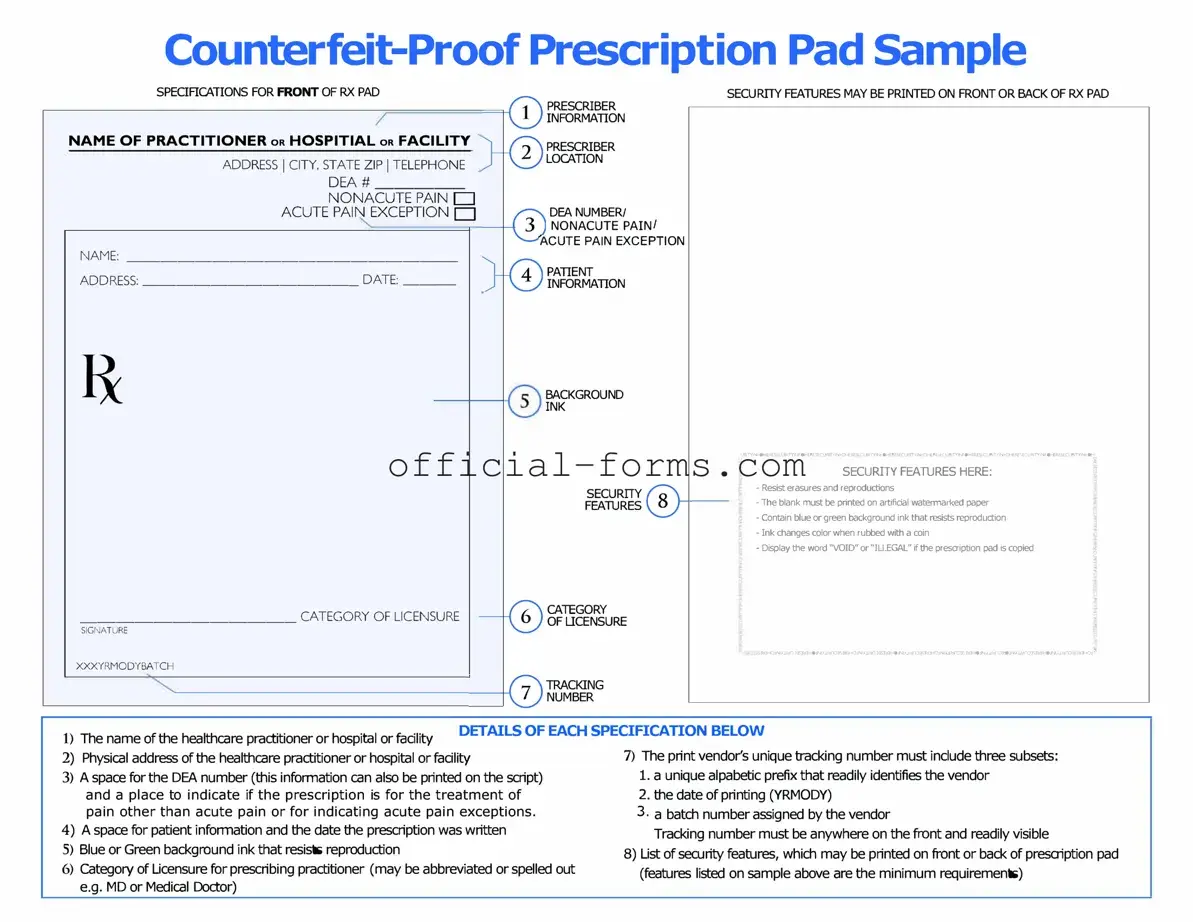Filling out the Prescription Pad form correctly is crucial for ensuring that patients receive the medications they need without delay. However, many individuals make common mistakes that can lead to confusion or even serious issues. Understanding these mistakes can help improve the process.
One frequent error is illegible handwriting. When prescriptions are handwritten, poor penmanship can make it difficult for pharmacists to read the medication name or dosage. This can result in incorrect medications being dispensed. Always write clearly or consider using a computer-generated form to avoid this issue.
Another common mistake is missing patient information. Failing to include essential details such as the patient's full name, date of birth, or contact information can delay the processing of the prescription. Ensure that all required fields are filled out completely before submitting the form.
Some people forget to specify the dosage or frequency of the medication. Without this information, pharmacists cannot provide the correct amount or instructions for taking the medication. Always double-check that these details are included to prevent any misunderstandings.
Additionally, not including refill information can lead to complications. If a prescription is intended to be refilled, it’s important to indicate how many times. This helps patients manage their medication supply without needing to return to the doctor’s office frequently.
Another mistake is using outdated information. Sometimes, individuals may fill out the form using old medication lists or previous dosages. Always verify that the information is current and accurate to ensure patient safety and effective treatment.
People often overlook the importance of doctor's signature. A prescription is not valid without the prescribing physician's signature. Make sure this is included to avoid any issues at the pharmacy.
In some cases, individuals fail to check for drug interactions. It’s essential to review a patient’s current medications to avoid prescribing something that could cause harmful interactions. Consulting with the patient or their medical history can help prevent this mistake.
Finally, not providing clear instructions for the patient can lead to confusion. Clear directions on how to take the medication, along with any necessary precautions, should always be included. This ensures that patients understand how to use their prescriptions safely and effectively.
